Month: December 2015
Varanasi: Finding God in Chaos
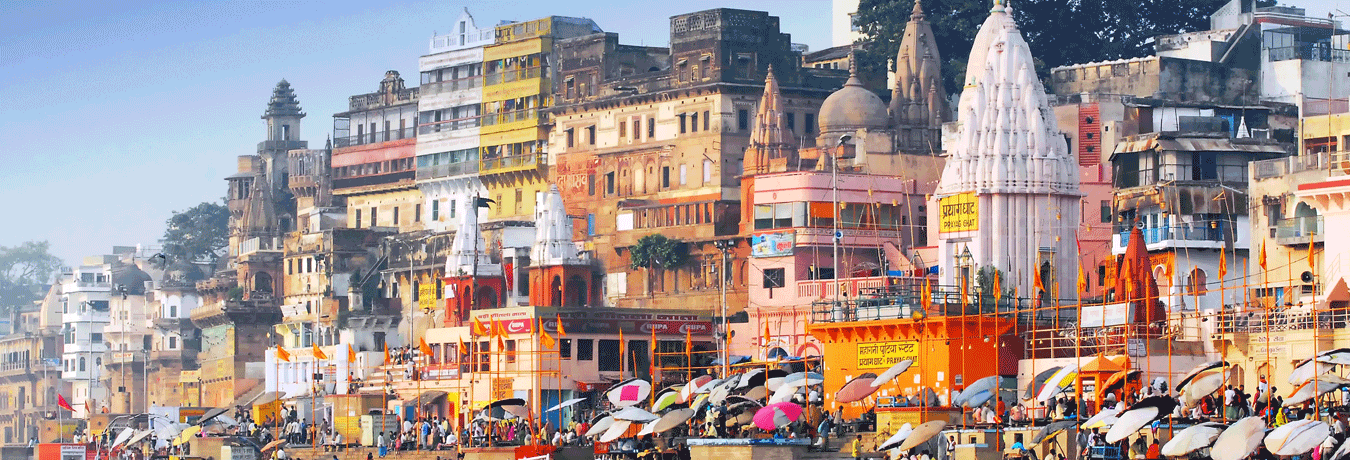
Situated on the banks of the Ganges, the spiritual city of Varanasi is also known as Kashi, which means the “City of Life” according to the Hindu mythology. This colourful and chaotic city is one of the major religious centres for the Hindus and one of the most visited pilgrim’s destinations in India. There are numerous temples, ashrams, ghats and other religious centres spread across the city, which attract tourists from the far and wide corners of the world. Pilgrims line up on the ghats of the River Ganges every morning to wash away all their sins! It is believed that by taking a dip in the holy water of Ganges, one can achieve salvation or moksha. People perform some intimate rituals and rites on the ghats of Varanasi each day, which create some overwhelming scenes for the onlookers. This holy land is also considered as the culmination point of the Indian civilization and religious philosophy. In fact, Varanasi has been home to many eminent poets, writers and philosophers, who have a great influence on the culture and art of this city. Currently, Varanasi is a parliamentary constituency of India’s Prime Minister Narendra Modi. Various development projects have been initiated in Varanasi these days to promote it as one of the cleanest cities in India. There are many things, which earn a unique status for Varanasi. Let us talk about some of the major attractions of Varanasi:
The Ganges River
Varanasi as a city could flourish during the troubled medieval times because of its proximity to the holy river of Ganges. This city has been always remained the epicentre of various cultural and spiritual activities in India. The Ganges is considered as the most important and pious river in India. Millions of people visit Varanasi every year to take a dip in the holy waters of Ganges. There is a lot of faith and cultural significance attached to this river. One can enjoy some stunning views of the river during the sunrise and sunset every day. Many people light candles on its ghats and offer flowers to pay their homage to this great river every day.
Dashashwmedh Ghat
This ghat is regarded as one of the most sacred and popular Ghats of Kashi. The entire ghat looks stunning during the Ganga Aarti ceremony, which draws many tourists towards the river every day. Worshippers and tourists fill up every corner of this ghat to participate in the Aarti ceremony, which is attended by the many priests and sadhus. This spectacular event can be enjoyed from a boat in the river.
Sarnath
Though Varanasi is primarily considered as a hub of the spiritual activities for Hindus, Sarnath which is a prominent site for Buddhists, is situated only 10 km away from this holy city. It is believed that the Lord Buddha delivered his first sermon here in Sarnath, after attaining the enlightenment. Emperor Ashoka had erected a stupa at Sarnath around 234 BC to commemorate that event which changed the course of Buddhism across the sub-continent. In fact, Sarnath also has the tallest statue of Buddha in India, which makes it one of the major attractions for tourists.
New Vishwanath Temple
This majestic temple is situated near the Banaras Hindu University (BHU) and constructed by the Birla family, hence it is known as the Birla Temple. Actually, it is a big temple complex, which has seven temples in it with the statues of popular Indian deities: Shiva, Durga and Lakshmi among others. The remarkable architecture of this temple has been inspired by the Old Vishwanath Temple. The entire structure is made of white marbles, while the inside walls are adorned with the holy text of Gita, the sacred scripture book of Hindus.
Manikarnika Ghat
This is another popular Ghat in Varanasi, which is a place of cremation for the Hindus. One can witness the various rituals and rites in progress, which are related to the popular Hindu beliefs. This place is not for the faint-hearted, as you can witness various unique activities in the form of rituals, which are performed over the dead bodies during the cremation.
Ramnagar Fort
The Ramnagar Fort was once the residence of the former King of Varanasi. This massive fort was constructed in the year 1750 AD by using red stones and it highlights the architectural excellence of those times. Many consider this fort as an astronomical wonder, as there is a big clock in the palace, which was built precisely to show day, week, month and various astronomical details of space objects. There is a museum in the palace, which has a tremendous collection of antique swords, costumes, and palanquins.
Other Attractions
There are hundreds of temples across the Varanasi city. All these temples have historical and religious significance and some of them are as old as 500 years. Though, Sankat Mochan and Kashi Vishwanath temples are the most popular ones, there are many other religious places which belong to various Sadhus or Hindu monks. Varanasi City also has many yoga centres, where one can learn the age-old practises of Yoga under the guidance of experts. There are many hues of Varanasi and one has to spend at least a week in this city to explore some of them.
Jaipur: The Mesmerizing Pink City

For many tourists, Jaipur is another important city to visit in India because it is a part of the world-renowned golden triangle tour, which also includes Delhi and Agra – two other prominent destinations in it. Whether it is the magnificent architecture, majestic palaces or handicraft, there is so much about this so-called Pink City, which is worth exploring. Not many people know that Jaipur was part of the first urban grid created by the 18th-century rulers of Rajasthan. It is also the gateway to the legendary desert of Rajasthan – a land swathed in the tales of pride and honor related to the rich history and tradition of this region. It is another North Indian city, but Jaipur has so many specialities, which set it apart and make it one of the most adored tourist destinations in India. Let us explore them:
Grand Forts
The glory and grandeur of the Rajputs are on display in the form of these forts, which are in and around this beautiful city and gives it that unparalleled imperial look. These forts also give an overview of the war-torn history of North India during those troubled medieval times. The most popular forts are Jaigarh Fort, Amber Fort, and Nahargarh Fort. All these massive structures are complemented by an incredible set of fortifications, which are fine examples of engineering and art of those times.
Awe-inspiring palaces of Jaipur
The beautifully built palaces of Jaipur present a perfect blend of the Mughal, Rajputana and European architectural styles. The enormity and opulence of these palaces are certainly a treat to the eyes. One can relive the glory of those days by visiting these frescoed palaces and further explore the grand heritage and history of Rajasthan. Now, some of these palaces have been turned into hotels for tourists i.e. Jai Mahal Palace, Rambagh Palace, Samode Palace, The Raj Palace, Raj Mahal Palace, and Narain Niwas Palace among others.
Pink City
Interestingly, it was the first planned Indian city. In fact, it is a part of the old city in Jaipur, which is called the Pink City. It is a string of magnificent palaces, built superbly to complement each other. Founded by Sawai Jai Singh II, this entire city was painted in the pink colour to offer a grand welcome to the Prince of Wales in 1876. The most outstanding thing about its construction is that it has been built in such a precise manner to ensure excellent ventilation in each part.
Crafts
Over the decades, Jaipur has been remained the main centre of gem cutting and polishing in North India. The Old City has a Johari Bazaar, which is a hub of connoisseurs of glittering rocks. If expensive gems are not your kind of thing, then take a walk through the industrial suburb of Sanganer, where you can check out various stores selling the local Anokhi clothes. There is a Museum of Hand Printing nearby, which offers a wonderful range of handcrafted fabrics.
Festivals
Jaipur is known for its colourful festivals. Each year, Jaipur city hosts popular festivals like Kite festival, Gangaur festival and Teej festival. In recent years, Jaipur has also earned worldwide fame for its Literature Festival, which is attended by many notable authors every year.
Rann of Kutch: The Mystic Desert

It does not fall into the category of typical tourist trails because this destination is not only different from others but also a part of the hottest region of India. Now the obvious question is that can a part of a desert attract tourists? Well, the first images that usually come in mind, when someone thinks about Rann of Kutch are of the majestic White Salt Desert and shimmering glimpses of a mirage. Nevertheless, there is more to the largest district of India than that, and one has to explore this barren but beautiful land to savor its many charms and attractions – from intricate art, fabulous carvings, and birds, to the ethereal natural beauty. Rann of Kutch is divided into two regions: The Great Rann of Kutch and The Little Rann of Kutch. The main attraction of the Great Rann of Kutch is its seasonal salt marsh that covers around 7000 sq kms of land. The Little Rann of Kutch is a salt marsh land only also a home to the endangered Indian Wild Ass. Let us look at the attractions of this desert and other important things, which set it apart as a tourist destination:
Kalo Dungar
In Gujarati, Kalo Dungar means the black hill and it is also the highest point in the district. Well, this hill provides a great panoramic view of the entire Rann of Kutch and nearby Indo-Pakistan border. Besides savouring the majestic glimpses of this desert, one can also visit the ancient temple of Dattatreya, which is built near the Kalo Dungar. This grand temple is dedicated to Dattatreya, who is considered as the third incarnation of the Lord Buddha.
Kutch Desert Wildlife Sanctuary
However, it is a part of a barren land, there is a wild sanctuary here, which is known as the Kutch Desert Wildlife Sanctuary – famous for its massive breeding colonies of the flamingos and as a last refuse of the endangered Asiatic wild ass. Spread across an area of 4,950 sq km, this saline land is also a home to a considerable population of jackals, nilgai, and snakes. In fact, many exotic varieties of birds also reside in this sanctuary and attract many tourists, especially during winters, when the temperature stays comfortable.
Nirona Village
The most outstanding thing about this village is that it is the only place in India, where you can find the most consummate artists of the Rogana Art. The entire village is like an exhibition of art, as you can behold some great illustrations of Rogan Paintings on the walls and metals. In fact, there are many artists in this village, who are known for their awe-inspiring metal and lacquer works. This place is a heaven for anyone searching for exotic handicrafts.
Mandvi Beach
The pristine Mandavi beach is the place to be if someone is seeking tranquillity. Besides enjoying the enthralling view of this place, one can also indulge in bird watching. The Vijay Vilas Palace is not far away from here. Take a camel ride to the palace amidst rotating windmills, which further augment the overall beauty of Mandavi Beach.
Bhuj
The Bhuj city is a part of the district of Kutch. This city is known for its ancient temples and architecture. Here, you can find the artists of the notable bandhni or tie-dye work. Besides that, it is a culmination destination to explore the culture, food, and art of Gujarat.
Rann Utsav
The Rann Utsav is an annual three-month-long festival, which is organised by the Government of Gujarat. This festival is all about the celebration of life through various cultural activities and festivities of Gujarat. One can savour the stunning views of various colours, sprinkled on a desert in a mesmerizing manner. The Rann Utsav gives you an opportunity to enjoy the flavours of Gujarat and hospitality of Kucchi People. This festival also works as a platform to keep the old arts alive and to revive various traditions, which are associated with this region.
When: 18th November, 2015 to 29th February, 2016.
The best time to visit Rann of Kutch is October to March every year.
How to reach:
The nearest airport is Bhuj, which is 50kms away. Ahmedabad International airport is 93kms away.
The nearest railway station is Wankener, which is 65kms from Rann of Kutch. Other nearest railway stations are Gandhidham and Bhuj.
Luxury Trains of India: An Insight

Besides being the largest means of transport in India, trains also facilitate a traveller to explore the awe-inspiring landscapes and territories of such a vast country in the most interesting and engaging manner. There is an exclusive fleet of luxury trains in India to augment your overall travelling experience and give you an opportunity to savour the taste of Indian royalty. These rail journeys have been exclusively designed to take you through the various world heritage sites, palaces and forts. The history of India’s luxury trains traces back to the era of the erstwhile Indian Nawabs and Maharajas, who used to travel in these luxurious locomotives. The first luxury train for public in India, was introduced in 1982, as “Palace on Wheels” by the Rajasthan Tourism and Development Corporation. Taking a cue from the success of that luxury train, Indian railways consequently launched other luxury trains, which traverse across different parts and landscapes of India. Each train has been based on a particular theme and astutely furnished with all the modern amenities to fulfil all your luxury desires. Let us take a look at all these magnificent trains:
Palace on Wheels
This first pan-country luxury train has been voted as the fourth best luxurious train in the world. The “Palace on Wheels” made its first run on January 26, 1982. It was refurbished completely and re-launched in August 2009 with a new look and a host of modern luxuries. This luxury train takes you back in time, as you chug through the fascinating landscape of Rajasthan. There are 14 salons on the train with each named after the provinces of Rajasthan. Two lavish restaurants of this train are named as Maharaja and Maharani Restaurants and they truly justify their titles by offering the best in local cuisines amidst the utmost luxury. Other excellent luxury facilities include spa, exotic bar, live TV, seamless Internet connectivity, and music.
The Palace on Wheels Itinerary
Schedule: The train runs from October to April every year.
Number of days: According to the itinerary, journey duration varies from 8 to 13 Days.
Destinations Covered: Delhi-Jaipur- Udaipur- Swai Madhopur- Chittorgarh- Jaisalmer- Jodhpur- Bharatpur- Agra-Delhi.
The Golden Chariot
The Karnataka State Tourism Development Corporation (KSTDC) started the Golden Chariot train, which made its maiden run on March 10, 2008. This luxury train travels across the captivating landscape of South India, covering most popular tourist destinations in the states of Karnataka and Goa. It is named after the prominent world heritage site, the Stone Chariot in Hampi, the gem of Karnataka tourism. There are 19 coaches on the train and painted with purple and gold colours. Besides other modern facilities, there are two lavish restaurants, a lounge bar coach and a gym coach. It takes you across all the significant destinations of South India with a lot to savour in heritage, wildlife and natural splendour. One can explore the beauty and vastness of this part of India amidst excellent luxury and comfort.
Schedule: All these itineraries run from October to March every year.
The Golden Chariot Itinerary
Number of days: 7 Nights / 8 Days
Destinations Covered: Bangalore – Mysore – Hampi – Belur – Kabini – Badami – Goa – Bangalore
The Southern Splendour Itinerary
Number of days: 7 Nights / 8 Days
Destinations Covered: Bangalore – Chennai – Mamallapuram – Pondicherry – Tiruchirapalli – Thanjavur – Madurai – Thiruvananthapuram – Poovar – Kochi – Kerala Backwaters
The Maharaja Express
The newest member of India’s luxury trains fleet, the Maharaja Express made its first run on January 9th, 2010. It is a joint venture of the Indian Railway Catering and Tourism Corporation (IRCTC) and the travel agency Cox and Kings in India. This luxury train has also won the prestigious World Travel Award as Asia’s best luxury train. There are all the requisite facilities on board with a magnificent dining coach, bar, lounge, and in-suite bathrooms. This train takes you through some exotic destinations across West and North India. Royal India and Classical India are two different itineraries of the same train.
Schedule: All these itineraries run from October to April every year.
The Maharaja Express Itinerary
Destinations Covered: Mumbai – Vadodara – Udaipur – Jodhpur – Bikaner – Jaipur – Ranthambore – Agra – Delhi
The Royal India Itinerary
Royal India: 8 Days / 7 Nights
Destinations Covered: Delhi – Agra – Ranthambore – Jaipur – Bikaner – Jodhpur – Udaipur – Vadodara – Mumbai
The Classical India Itinerary
Classical India: 7 Days / 6 Nights
Destinations Covered: Delhi – Agra – Gwalior – Khajuraho – Bandhavgarh – Varanasi – Lucknow – Delhi
Royal Rajasthan on Wheels
The Rajasthan Tourism Development Corporation (RTDC) runs the “Royal Rajasthan on Wheels” luxury train. Actually, it is an improvised version of the “Palace on Wheels,” runs on a similar route, and completes its journey in 7 days. This royal carriage is complemented by all the luxury facilities including restaurants, bar, fitness centre, spa and salons. Experience the best of luxury in the land of Maharaja and explore the marvellous heritage destinations of Rajasthan, Agra, Varanasi, and Khajuraho.
The Royal Rajasthan Itinerary
Royal Rajasthan: 8 Days/ 7 Nights
Destinations Covered: New Delhi- Jodhpur- Udaipur- Chittorgarh- Sawai Madhopur- Jaipur- Khajuraho- Varanasi- Agra- New Delhi.
Schedule: The train runs from October to March every year.
The Deccan Odyssey
The Deccan Odyssey is jointly run and maintained by the Maharashtra Tourism Development Corporation (MTDC) and the Indian Railways. It chugs across the various heritage sites of Maharashtra, Goa and Konkan route. There are 21 luxury coaches, equipped with two plush restaurants and a bar, a sauna, and a spa among other facilities. There is another luxury train in this segment, which is called The Indian Maharaja and it runs from Mumbai to Delhi, covering various heritage sites. The Heritage of Maharashtra is a different itinerary of the same train. It covers various heritage locations in Maharashtra.
Schedule: All these itineraries run from September to April every year.
The Deccan Odyssey Itinerary
Number of Days: 7 Nights/8 Days
Destination Covered: Mumbai-Ajanta & Ellora Caves-Udaipur Lake City-Ranthambhore Tiger Reserve- Jaipur – Taj Mahal at Agra -Delhi
The Heritage of Maharashtra Itinerary
Heritage of Maharashtra
Number of Days: 7 Nights/8 Days
Destinations Covered: Mumbai-Sindhudurg-Goa-Kolhapur-Daulatabad-Chandrapur-Ajanta Caves-Nashik-Mumbai
South Indian Food: A Light Delight

When it comes to Indian food, there is a pre-conceived notion, as it is generally associated with curry-laden dishes or popular North Indian dishes like Butter Naan, Chicken Tikka Masala, Biryani and Chicken Kebabs. However, a bit of study would reveal that Indian cuisine has an overwhelming range of diversity and distinctiveness because it has been influenced by many cultures and civilizations over a period. Debunking the myth here, the cuisines of South India are equally popular among tourists as the North Indian cuisines are. The appetizing South Indian dishes are mostly rice based and come with low calories and easy to digest factors. Another main attraction of South Indian cuisine is that most of the dishes are a wonderful and a modest blend of lentils and rice, which are predominately used to prepare many delicious dishes like vadas, dosas, idlis and uttapams. Another interesting aspect is that most of the South Indian dishes are prepared by using a lesser amount of oil and spices, which make them light and easy-to-eat. To understand these amazing dishes, let’s first compare them with the Northern Indian cuisines.
Difference between South Indian and North Indian Food:
It is not possible to scrutinize the diversity of India’s cuisines by comparing South and North Indian foods, but we can at least do some basic comparison to get a fair idea about these delicious foods. North Indian food is dominated by curries and breads. The popular breads are: naan bread, rumali bread and rotis or common bread. In curries, we have palak paneer or a mixture of spinach and cheese; and then popular non-vegetarian dishes like Butter Chicken, Kadhai Chicken, and Chicken Kebabas. When it comes to spices, North Indian foods are prepared by using Garam Masala, which is a mixture of various spices like cardamom, Black and white peppercorns, Cloves, Cinnamon, Bay leaf and Cumin. Amchoor or dried mango powder is used as a souring agent in most of the North-Indian curries. As far as drink is concerned, people in North India love tea or chai – they usually complement their meals with a hot cup of tea.
South Indian food: South Indian foods are mostly based on the mixture of rice, lentils, and stews. Most of the popular dishes like dosa, idli, rasam and sambar are prepared by using rice crepe, lentils, tamarind and vegetable stew. When it comes to spices, South Indian dishes are prepeared by using Huli pudi or sambhar powder. Tamarind is used as a sour ingredient in preparing stews. Dried herbs and curry leaves are used in preparing soups. South Indian finish off their meals with a special coffee, made with chicory.
Now, let us look at common, yet hugely popular South-Indian dishes:
- Dosa: Primarily, dosa or masala dosa is a staple diet in South India. It is made from a batter of urad lentil and rice – to make it mildly spicy, a potato mixture is stuffed inside the large pancake. Dosas come in many forms: from plain dosa to paneer dosa. The pancake, which is a mixture of rice and dal remains the same, only the mixture is altered. Generally, Dosa is taken with sambar, which is a sour sauce made from vegetables, tamarind and tur dal. Other chutneys or sauces which are taken with dosa include coconut white chutney and tur dal red chutney. Other popular versions of dosa are: Mysore, onion, and rava.
- Vada: Prepared with a mixture of lentil and gram flour, it is a dense and fried donut. Occasionally, potato mash is used to provide that extra heft to a vada. This delicious snack is one of the most popular street foods in South India. You can eat it with sambar and other common chutneys or sauces.
- Idli: These delicious saucer-like cakes are prepared by using the batter of rice and black lentils. Fluffy, soft, and steamed, idlis are consumed with sambar and chutneys. The freshness and fragrance of steamed idlis attract everyone towards them.
- Banana Leaf Thali: Usually, a thali in India is considered as a buffet of delicacies. Well, this thali is different. Base is created with a large pile of rice, placed on a banana leaf and a chapatti roti and other ingredients are tin cups of curries, chutneys or sauces, papads and pickles.
- Curd Rice: Curd rice or yoghurt rice is prepared by cooking the rice with fried spices including coriander leaves, cumin, asafoetida and pain curd. This food is consumed a lot in South India to beat the intense heat.
Well, the South Indian cuisine would not be as creamy as North Indian food, but when it comes to taste – it is equally good.
Contact us for a tailor-made Culinary Tour of South India!
Munnar: The Natural Wonderland
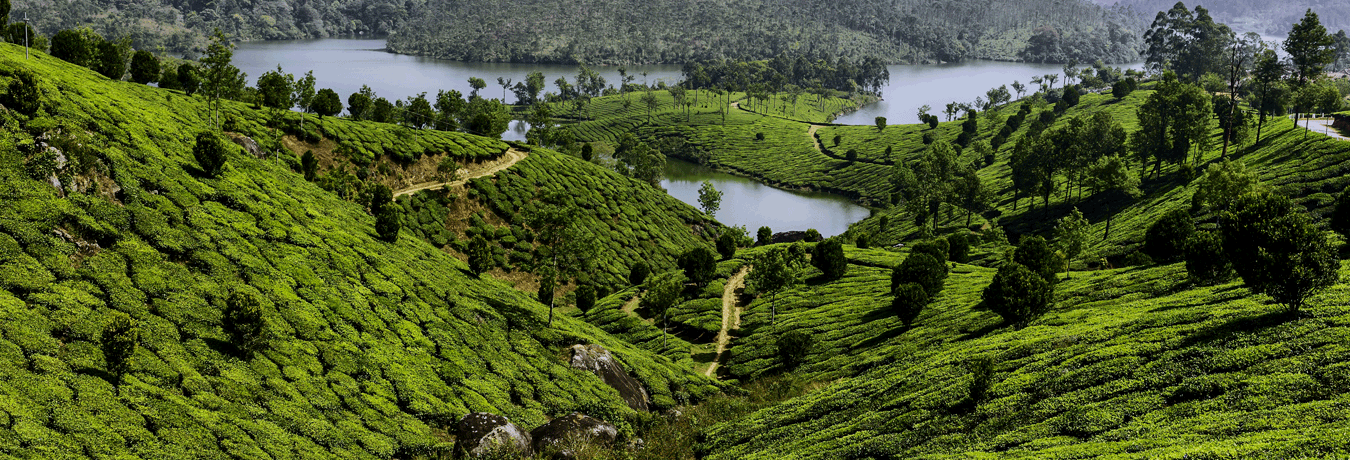
The land of rolling hills and verdant landscape – Munnar was once known as the High Range of Travancore. Today, this low mountain landscape is a hugely popular tourist destination in South India and a commercial centre of India’s top tea-growing estates. Interestingly, the name Munnar is actually a blend of two words Moonu (three) and Aaru (river), referring to the location of this town, which is at the confluence of three rivers – Madhurapuzha, Nallathanni and Kundaly. The hills are dotted with green tea plantations, which are exquisitely clipped and contoured as patterned hedges. The sprawling tea plantations, picturesque towns, mystic hills, and exotic flora and fauna make this town a hugely popular resort for tourists. Let us look at popular attractions of Munnar:
The Attukal Waterfalls
Right across the jungles of Munnar near Pallivasa, you can spot the Attukal Waterfalls. The majestic cascades of these waterfalls will bewitch you with their pearly white water streams, gushing over the glistening rocks to travel downstream. There is a narrow wooden bridge in the vicinity, especially built to offer a closer view of the Attukal waterfalls. The mist rising from the water stream veils the nearby region and gives it a semi-transparent look. You can take a walk up to the waterfall by striding on the pebbly path and behold the splendour of this natural marvel closely. Alluring and serene, the Attukal waterfall is also an ideal site to enjoy trekking.
Eravikulam National Park
Eravikulam National Park is one of the major attractions near Munnar. This park is home to several animals, butterflies and birds – and hugely popular for its endangered species the Nilgiri Tahr. The landscape of this place is suitable for trekking. One can also savour the enthralling view of the mystic hills and tea plantations from here. Many tourists throng this park, when the flowers of Neelakurinji plant cover the hills with their blue colour. One of the most interesting thing about this plant is that it blooms only once in every twelve years.
Kundala Lake
Kundala Lake was artificially created after an arch shaped dam was built between two close mountains. This manmade reservoir is 20 km away from Munnar. Scenic and serene, one can enjoy a boat ride here to explore the beauty of the region.
Chithirapuram
Chithirapuram is 10 km away from Munnar and known for its quaint cottages, bungalows, and lush-green playgrounds. The old world charm of this town attracts many tourists towards it every year.
Marayur
According to the Hindu mythological epic Mahabharatha, the Pandavas stayed in Marayur during this exile. This place is known for its Neolithic era dolmens and paintings. It is also home to the only sandalwood forest in Kerala state of India.
Top Station
As the name suggests, Top Station is located on the highest point on the Munnar-Kodaikanal area. This railway station is at 1,880 meters above the sea level on the Kundala Valley railway line, and it is around 40 km away from Munnar. One can enjoy an awe-inspiring view of the Valley of Theni and Western Ghats from this place.
Chinnar Wildlife Sanctuary
Chinnar wildlife sanctuary is located on State Highway 17 of Idukki district of Kerala. It is 60 km from Munnar and considered as an ideal place to explore the rich wildlife. It is home to endangered grizzled giant squirrel. Besides that, there are around 245 species of birds and 34 species of mammals in this sanctuary including elephants, panthers, and tigers.
Best time to visit: During the months of September-October.
How to reach:
The nearest airport from Munnar is Cochin International airport which is just 125 kilometers away.
The nearest railway stations are Kochi are Ernakulum.
Jaisalmer: The Golden Oasis of Rajasthan
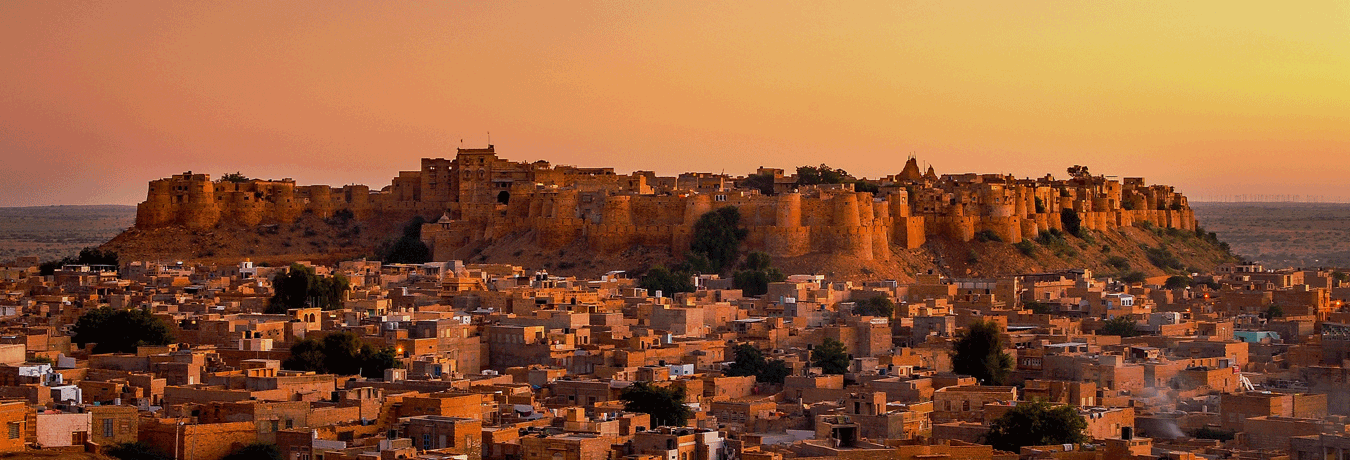
Inducing a mesmerizing picture of an ambience taken straight from the pages of Arabian Nights’ fables, the Jaisalmer city of Rajasthan is situated right amidst the scenic Thar Desert, and also known as the Golden City. It is one of the most preferred tourist destinations in India and ranked as one of the major attractions of Rajasthan
which attract thousands of tourists towards it every year. The scenery of Jaisalmer appears surreal to the first time visitors, as they find it difficult to fathom that a vast kingdom could thrive in this barren desert. One can not only trace the imprints of the Royal Rajasthan in Jaisalmer by visiting the fort and other architectural landmarks in the area, but can also cherish the beautiful memories of the moments spent with locals, known for their hospitality and warmth. Overall, Rajasthan is known for its grand heritage and you would find it in abundance in Jaisalmer, but here, you would explore a different facet of it. There are many historical attractions scattered all over the Jaisalmer city and one needs to spend a few quality days exploring them all. A perfect amalgamation of antique and medieval era architecture, there is a lot in Jaislamer to catch your imagination. So, let us find out what are those attractions:
The Jaisalmer Fort:
Perched right on the top of a small hill to offer a mesmerizing view, this five-storied fort overlooks the entire area and carries the prints of Royal era architecture. The legendary filmmaker and writer Satyajit Ray described the splendour and architecture of this fort in his novel, which was later turned into a film. This imposing fort was built in the 12th century by the Rajput ruler Rao Jaisal to keep a check on the foreign invaders. The fort is built by using the yellow sandstone, which gives it that enticing golden look during sunset and contributed in earning the title for it as “Sonar Quila” or “The Golden Fort.” This fort is encircled by a 30 foot high wall, which has 99 bastions and some intricately carved gateways. The construction and beauty of this fort have all the requisites to leave you awestruck. One can savour the panoramic view of the entire Jaisalmer city from its two vantage points, which were used as canon points.
The Gadisar Lake:
Once a water reservoir for the entire state of Rajasthan, the Gadisar Lake has now become an illustrious tourist destination in Jaisalmer. Surrounded by temples and a majestic landscape, the Gadisar Lake is the iconic symbol of prosperity and peace in the region. This lake is located just a kilometre away from the fort and constructed by the Raja Rawal Jaiswal and then reconstructed by Maharwal Garsi in 1367 AD. This lake provides food to many migratory birds. Besides being a haven for birdwatchers, this place is also a pilgrimage spot for many because of the number of temples in the surrounding area. It also offers a stunning view of the Jaisalmer Fort. Little island structures and minarets on the lake add grandeur to the beauty of the entire landscape. One can enjoy the ultimate serenity amidst this calm setting and take a boat ride to savour the beauty of this place.
The Salim Singh ki Haveli:
The most unique thing about the Salim Sing Ki Haveli is that its architecture and sculpture are a bit different than any other Haveli of that era. One of the highlights of this Haveli is its roof, which has been exquisitely created with a outline that resembles a peacock. The grand gate of this Haveli is adorned by the Tuskers, built by using the sandstones. There are 38 balconies in the Haveli and each balcony is different from others in terms of artistry. This Haveli was named as Jahaz Mahal because its structure resembles a ship stern.
The Raj Mahal:
The Raj Mahal is characterised by its alluring ambience and cultural eminence. This grand building was built by the Englishmen right inside the majestic Jaisalmer fort, and its design apparently exhibits the lavishness of those days, when Britishers ruled India. It is a seven-storied building, which is finished with lattice work.
The Patwon ki Haveli
The Patwon ki Haveli was the very first Haveli, which was ever built in Jaisalmer. Actually, it is a cluster of five different Havelis and together they create a massive building. This Haveli was also known as the “mansion of brocade merchants” because this building belonged to the Patwa family, which used to be the traders of gold and silver. Now the Haveli is preserved as a heritage building and the Rajasthan government takes care of it.
Best time to visit: From October to the month of March.
How to reach:
The nearest airport is the Jodhpur airport, 285 Km away from Jaisalmer.
Jaisalmer has its own railway station, and it is well connected by a rail network with Jodhpur as well as with other major cities of India including Jaipur, Agra, and New Delhi.
Koavalam: The Pearl of Kerala
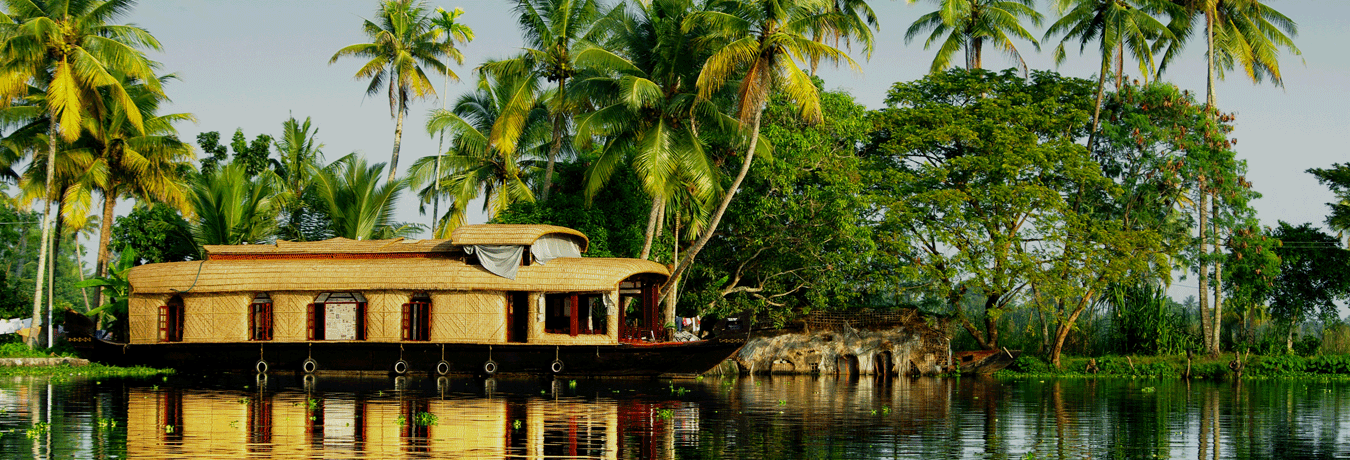
Kovalam is one of the most famous beaches and major tourist attractions in India. This place has evolved from being a quaint fishing village to Kerala’s most developed resort over a period. In Malayalam, Kovalam means ‘grove of coconut trees’ which is characterised by the presence of verdant rows of coconut trees covering the entire area and three adjoining crescent beaches. Due to its ethereal beauty and natural richness, Kovalam has also earned a special title as ‘the paradise of the south.’ The town woke up from a slumber in the 1970’s when it became an essential destination of the famous Hippy Trail. Consequently, its fame grew as an exotic location, which translated into surge in tourism. There are many tourist places to explore in Kovalam, let us talk about them:
Lighthouse Beach:
Majestically standing as the beacon of Kovalam, the Lighthouse Beach is 35 meters tall, appears magnificent as it blends well with swift waves, crystal-clear seawater, and glinting sand to create a gratifying panorama. This beach earned its name from the old Vizhinjam lighthouse, which stares at the entire region from a rocky hillock named as the Karumkal Hill. The Lighthouse Beach is the biggest of the three beaches in Kovalam area and offers a wide space to enjoy a lot of activities – sunbathing, swimming, long walks by the shoreline and beach volleyball. For your gastronomic delights – there are many food stalls on the shore, which serve delectable seafood. Besides that, tourists can also enjoy rejuvenating treatments at beachside spas and Ayurvedic massage parlours.
Samudra Beach:
One of the most beautiful and peaceful beaches in Kovalam – the Samudra beach is the least populated beach in the region and a home to many fishermen. Those who want to behold the beauty of nature amidst tranquil ambience favour this beach. The entire place is characterised by a profound sense of solitude and makes you feel close to your inner self. Other notable attractions of this area are the Ashoka beach and the Vizhinjam port.
Hawah Beach:
Hawah Beach or Eve’s Beach offers a great opportunity to observe the various fishing activities. Complimented by a rock promontory and a serene bay of blue waters, this beach offers a stunning view of the seawater on moonlit nights. Interestingly, this beach earned widespread fame as the first and the only topless beach in India before such activities were strictly banned by the authorities. Hawah beach is a perfect destination for those seeking natural beauty and recreation. There are a few bars and shops on this beach, where you can relax and enjoy.
Vellayani Lake:
Vellayani Lake is 7km away from Kovalam. It is the largest fresh water lake in Thiruvananthapuram district of Kerala and also known as Vellayani Kayal in local language. It is considered as a perfect picnic spot in Kovalam. One can enjoy an awe-inspiring view of the lake during a moonlit night. The entire place turns into a massive carnival site during the festival of Onam, when the annual boat race is organised on the lake. This lake is famous for its amazing ecosystem, created by a variety of flora and fauna.
The Vizhinjam Village
The Vizhinjam Village is a perfect destination for those looking for an ultimate Ayurvedic centre in Kerala. Undoubtedly, this village has one of most popular Ayurvedic centres in Kerala. The other attractions are: quaint fishing harbours, rock cut temples and vast beaches. The village still practises the old Ayurvedic methods with roots tracing back to the 11th century.
The German Bakery:
The German bakery is hugely famous among tourists and locals for its assiduously prepared breakfast menu and specialities. It is a mid-priced eatery in Kovalam, located on the lighthouse beach. You would love to relish the delicious pancakes and soul-stirring shakes, which attract everyone towards the German Bakery. Besides enjoying sumptuous dishes, one can also savour the spectacular view of the coastline from its beach-facing terrace.
Best time to visit: The best time to visit is from the month of September to the month of March.
How to reach:
Nearest railway station: Thiruvananthapuram Central, about 16 km.
Nearest airport: Trivandrum International Airport, about 10 km.




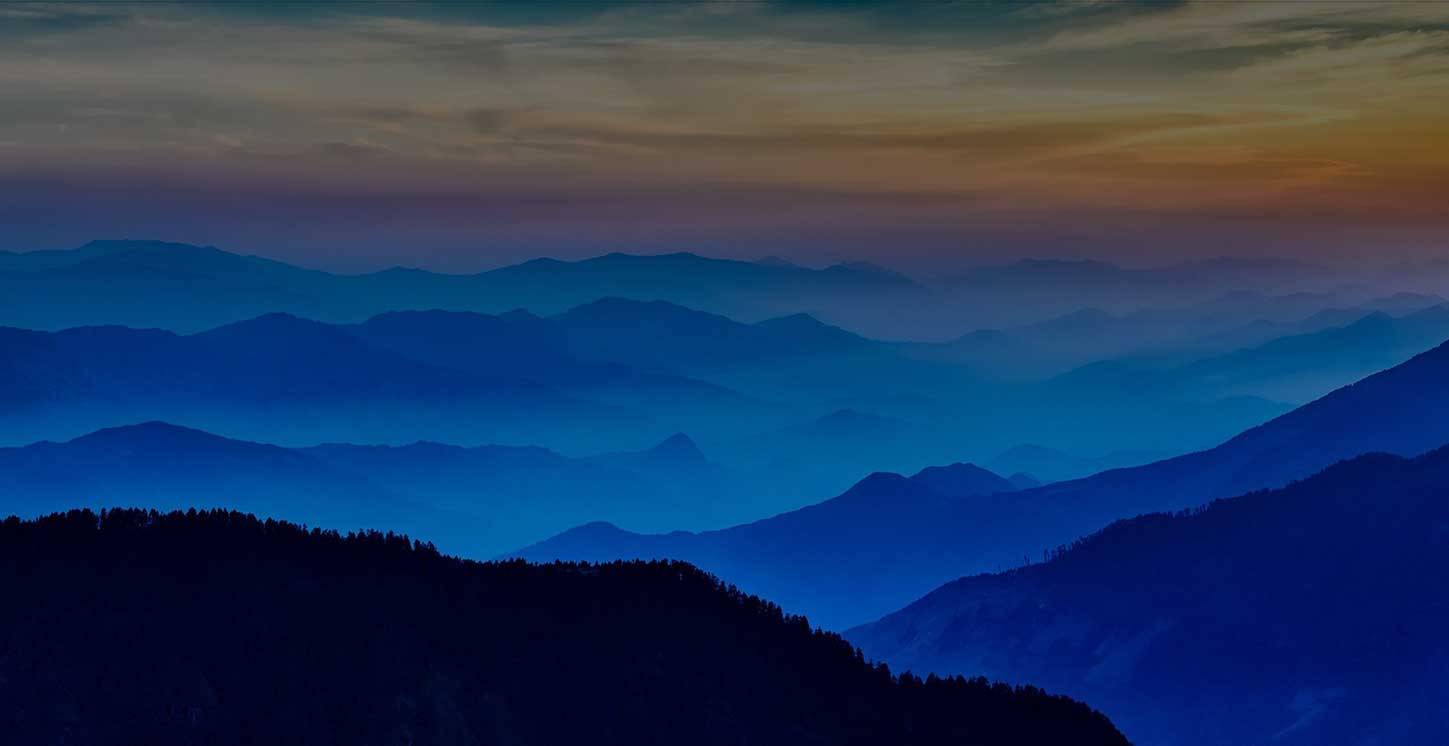
 +1-(765)-586-1210
+1-(765)-586-1210 +44-2030-2689-44
+44-2030-2689-44 +91 124 4361906
+91 124 4361906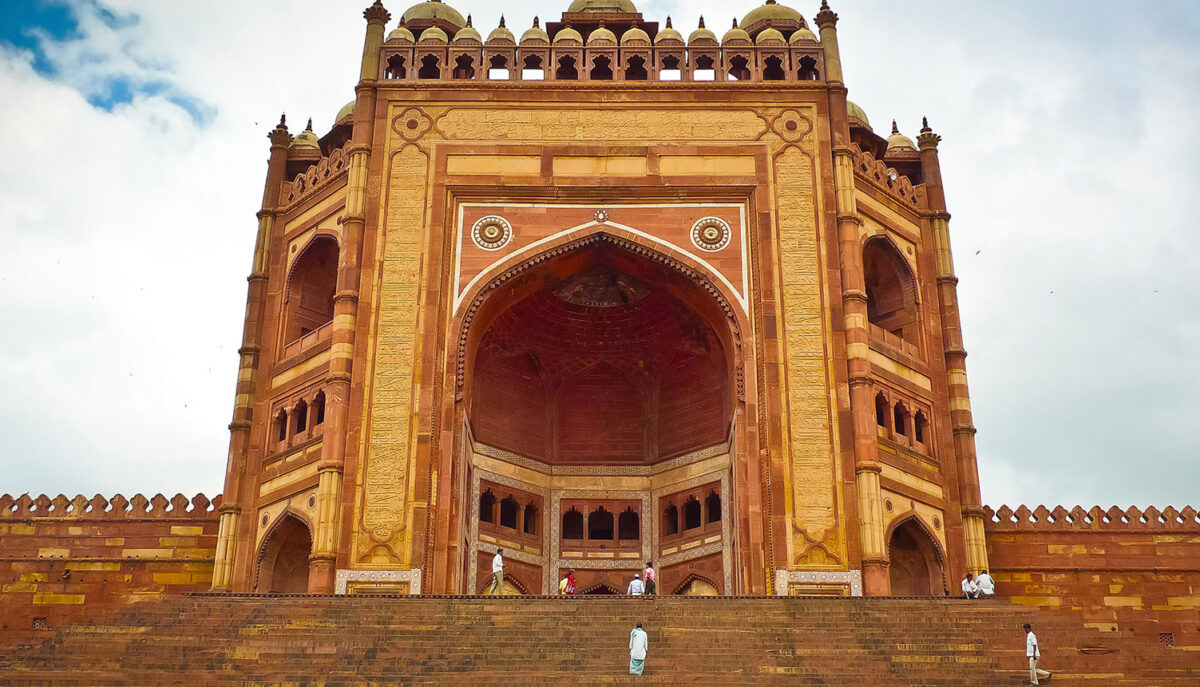
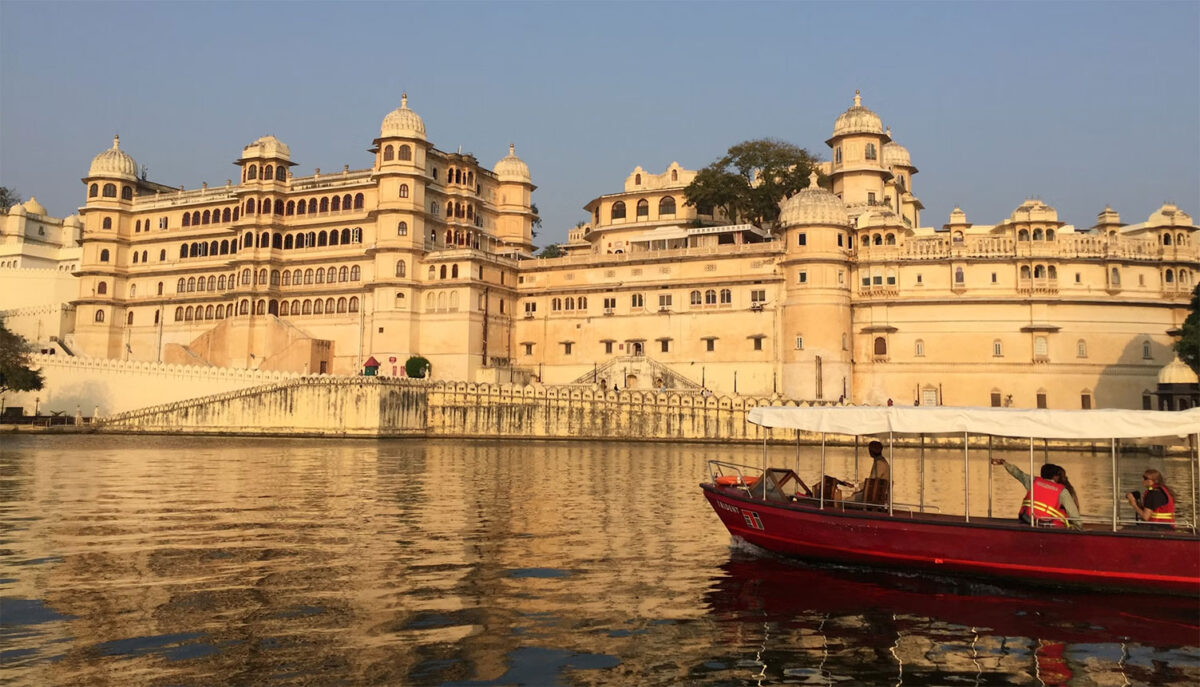

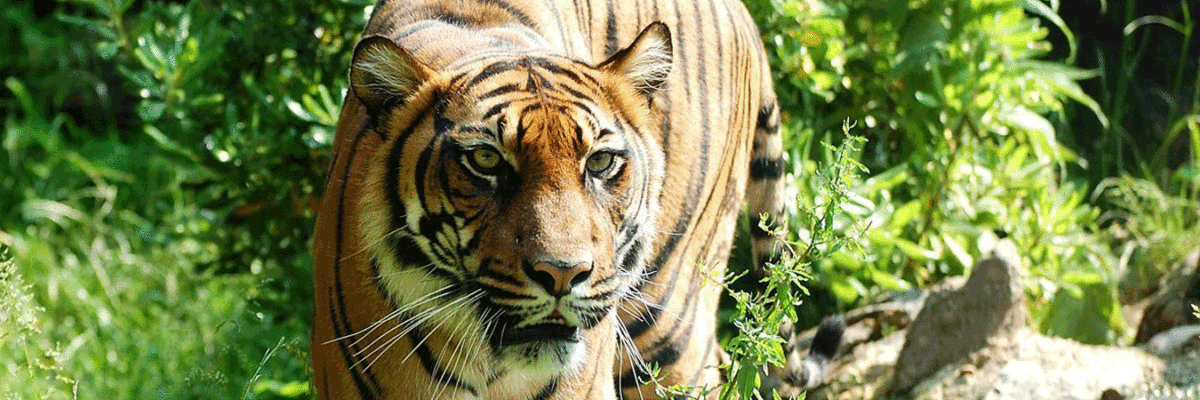
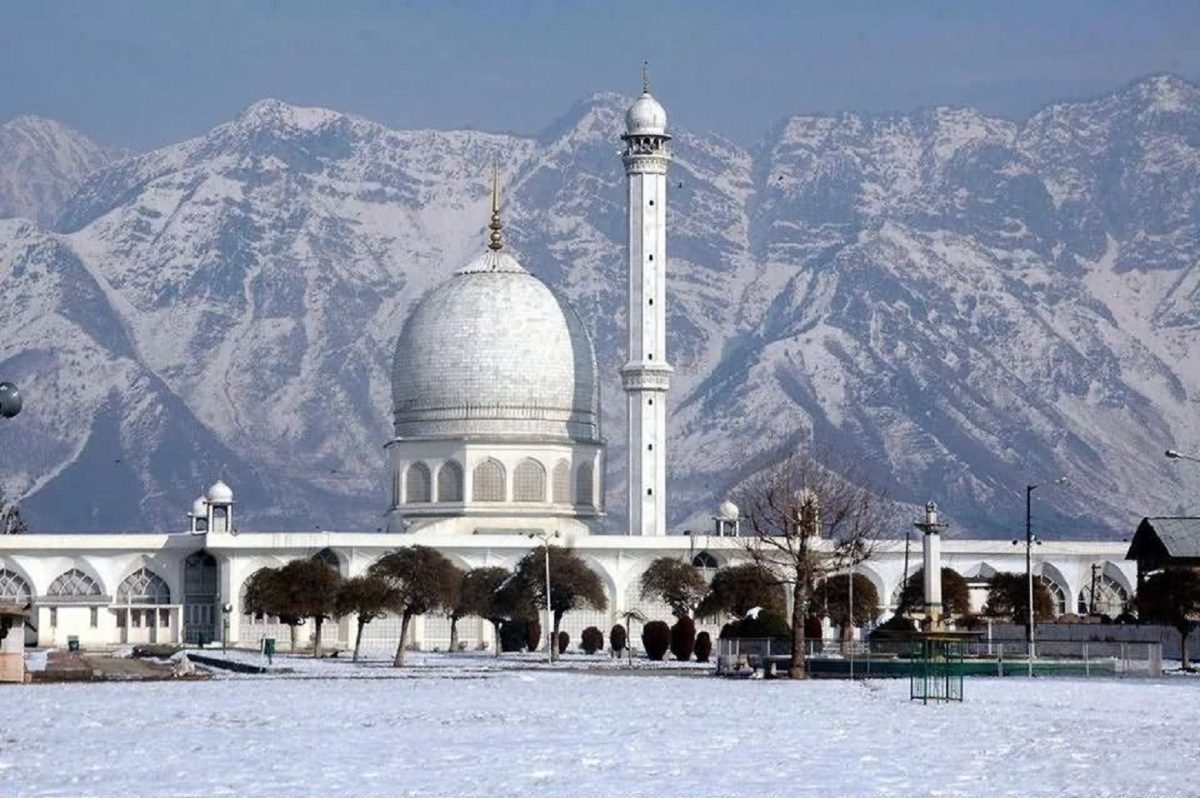


 +1-(765)-586-1210
+1-(765)-586-1210 +44-2030-2689-44
+44-2030-2689-44
